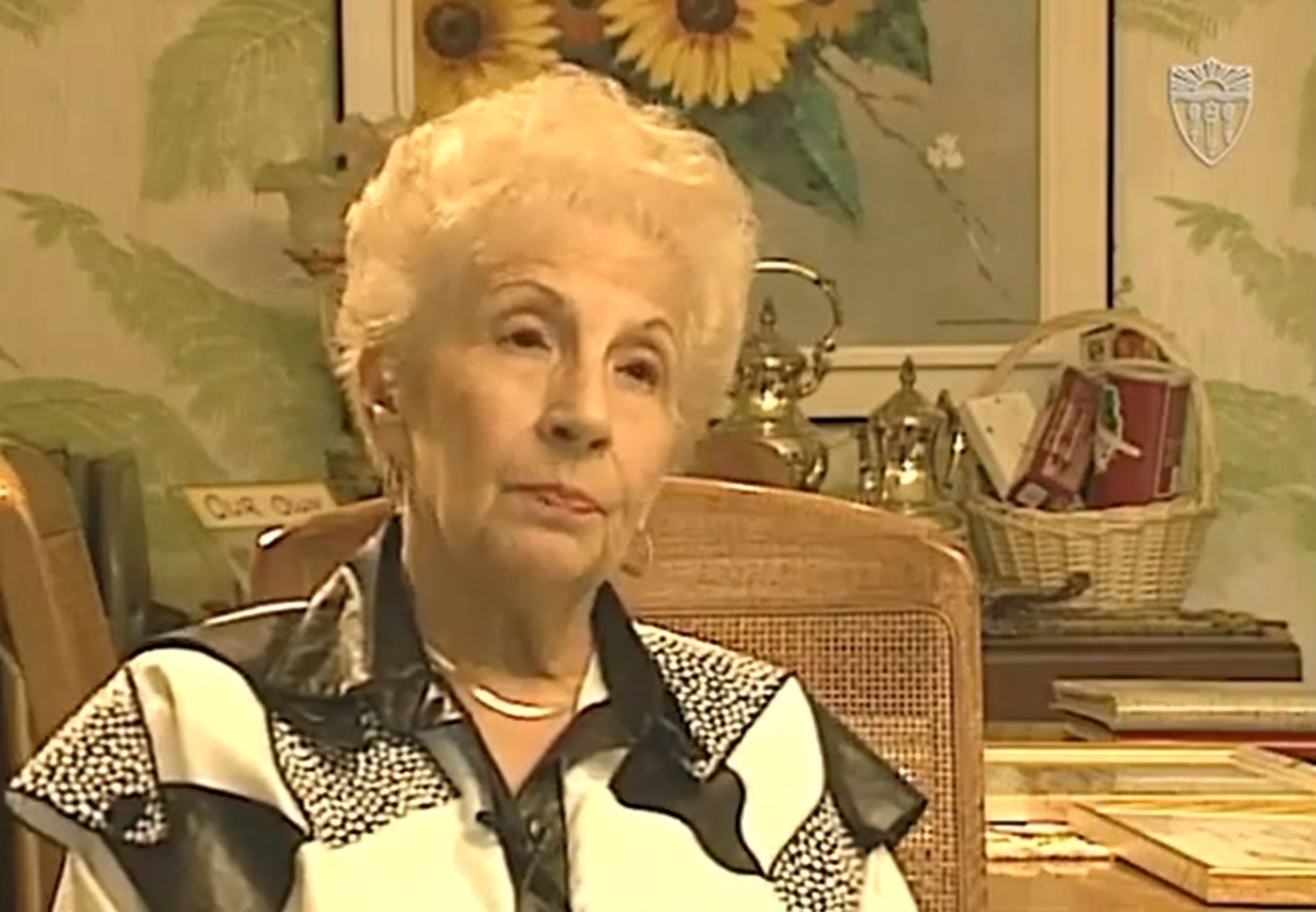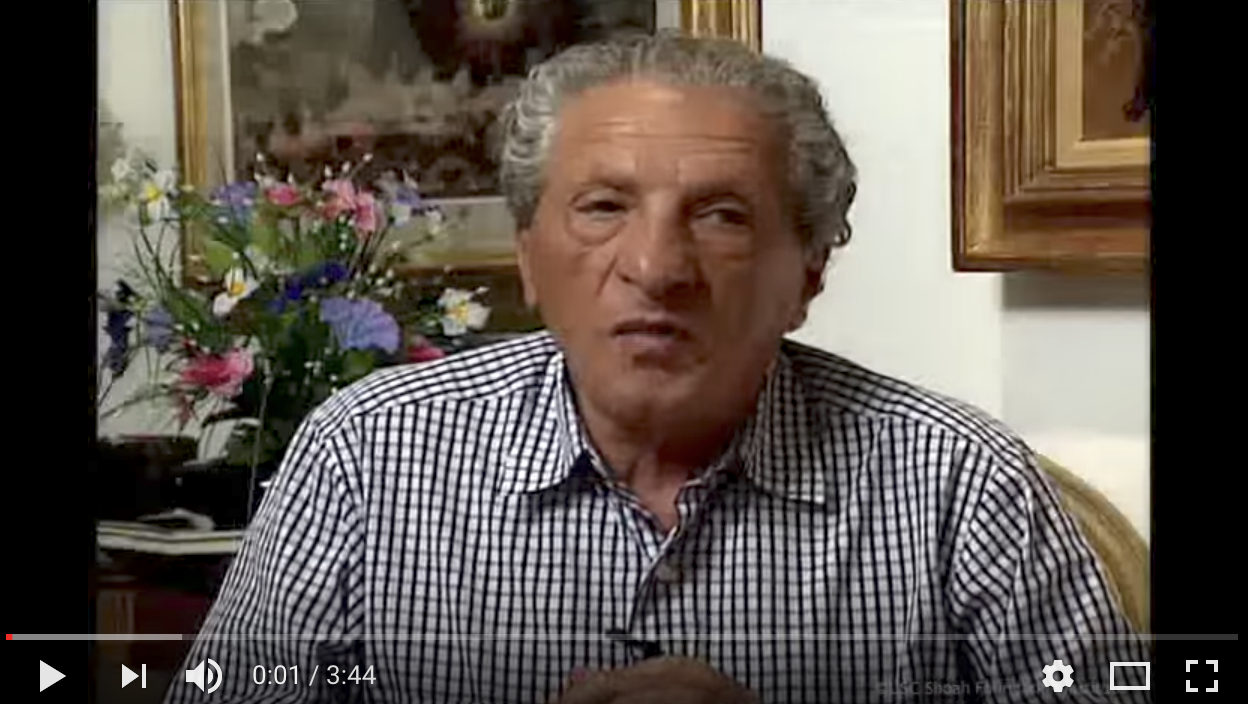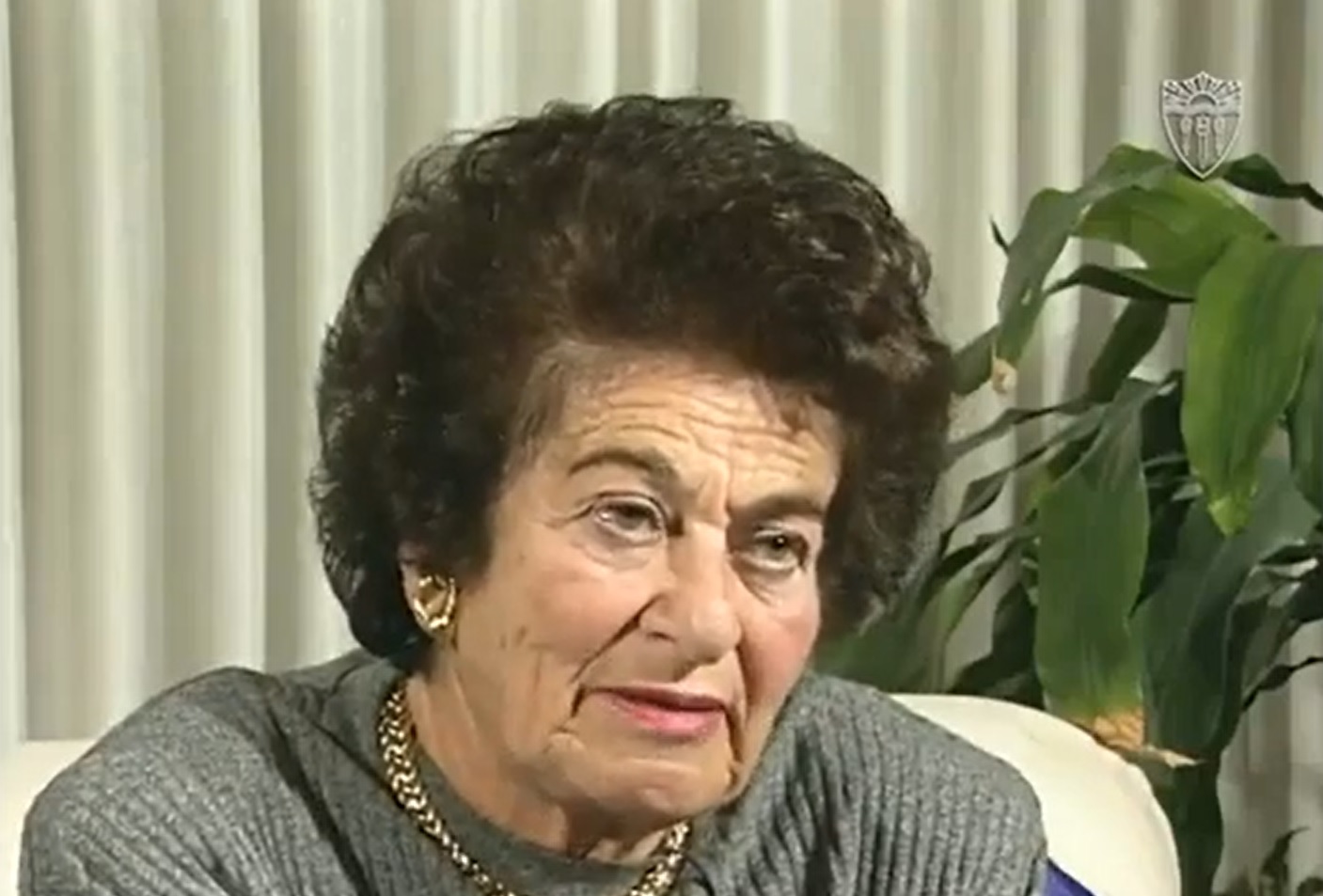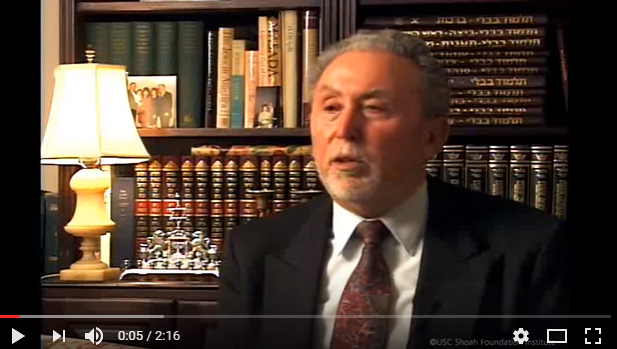TEACH
![]()
LESSON PLAN
EDUCATOR RESOURCE: LESSON PLANS
Our Lesson Plans provide a unique experience for educators to teach about the Holocaust effectively and interactively. The modular design of the lessons found within each unit allow for adaption and customization to specific grade levels and subject areas. The integration of rich content helps students construct an authentic and comprehensive portrait of the past as they frame their own thoughts about what they are learning, resulting in a deeper level of interest and inquiry. Each lesson includes:
- Step-by-step procedures
- Estimated completion time
- Resources labeled by icons






 direct teachers to the piece of content named in the procedures
direct teachers to the piece of content named in the procedures
- Print-ready pages as indicated by
 are available as PDFs for download
are available as PDFs for download
If you are new to teaching about the Holocaust, we encourage you to participate in one of our
online course offerings to support instruction ahead. As well, for teachers with limited instructional time seeking a starting point, we offer a sample
One Day Lesson Plan, as well as a sample
Day Two Lesson Plan for a 2nd class period of instruction.
For more information, questions or concerns please
contact us.
PEDAGOGY PRINCIPLES FOR EFFECTIVE HOLOCAUST INSTRUCTION
PEDAGOGICAL PRINCIPLES FOR EFFECTIVE HOLOCAUST INSTRUCTION
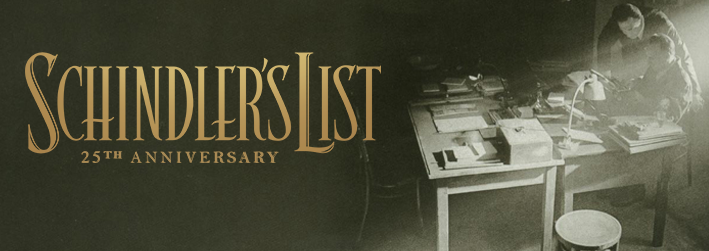
December 2018 marks the 25th anniversary of the release of Steven Spielberg’s Schindler’s List, which depicts the true story of Oskar Schindler—a man who saved the lives of more than 1,200 Jews during the Holocaust. It was Spielberg’s experience making this film that inspired him to collect and preserve the testimonies of over 54,000 Holocaust survivors and witnesses, a pursuit which ultimately led to the creation of what is now USC Shoah Foundation.
In honor of Universal Pictures’ rerelease of Schindler’s List, Echoes & Reflections has created a short, classroom-ready Companion Resource, that will help educators to provide important historical background and context to the film, as well as explore powerful true stories of rescue, survival, and resilience with their students.
Additionally, the following videos, recorded at Yad Vashem, feature Schindler survivors who speak of the impact Oskar Schindler had on their lives.
EVA LAVI TESTIMONY
Eva Lavi was the youngest survivor from Schindler’s list. She was two years old when the war began.
NAHUM & GENIA MANOR
Nahum Manor met and fell in love with his wife, Genia, in Schindler’s factory. Watch him read a letter at
Schindler’s gravesite, expressing what he meant to them.
CLASSROOM POSTER SERIES
INSPIRING THE HUMAN STORY
Echoes & Reflections is excited to announce that our poster series:
Inspiring the Human Story, is now available in PDF format,
free of cost.
The posters feature the powerful words and experiences of Holocaust survivor and memoirist
Elie Wiesel, Holocaust survivor
Kurt Messerschmidt, and Anne Frank rescuer,
Miep Gies. Each poster promotes meaningful conversation and reflection in the classroom, whether in person or in a virtual setting, and inspires students with powerful human stories of the Holocaust that can continue to guide agency and action as a result of studying this topic.
To support you in these efforts, we have also compiled several suggested
classroom activities from teachers in our network that may be of use and interest.
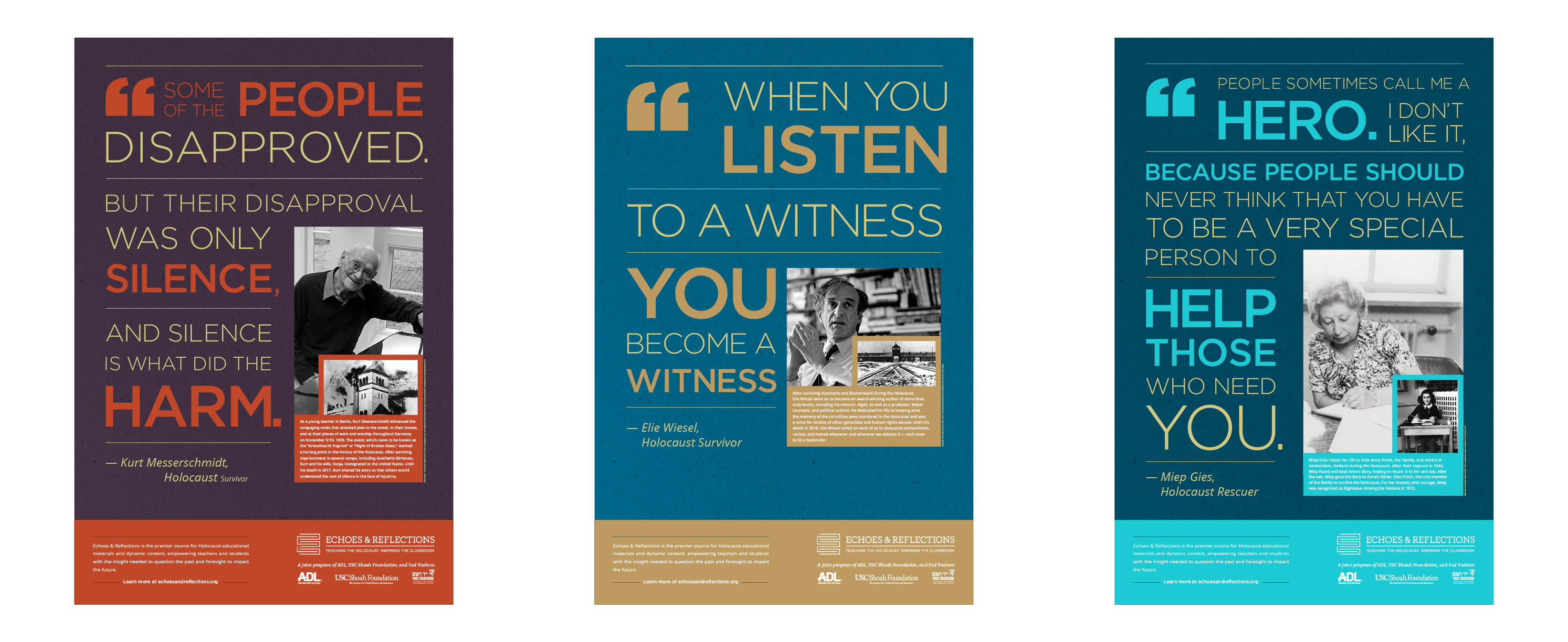
Please fill out the form below to access and download your PDF posters.
WE SHARE THE SAME SKY
USC Shoah Foundation’s first podcast, We Share The Same Sky, seeks to brings the past into present through a granddaughter’s decade-long journey to retrace her grandmother’s story of survival. We Share The Same Sky tells the two stories of these women—the grandmother, Hana, a refugee who remained one step ahead of the Nazis at every turn, and the granddaughter, Rachael, on a search to retrace her grandmother’s history.
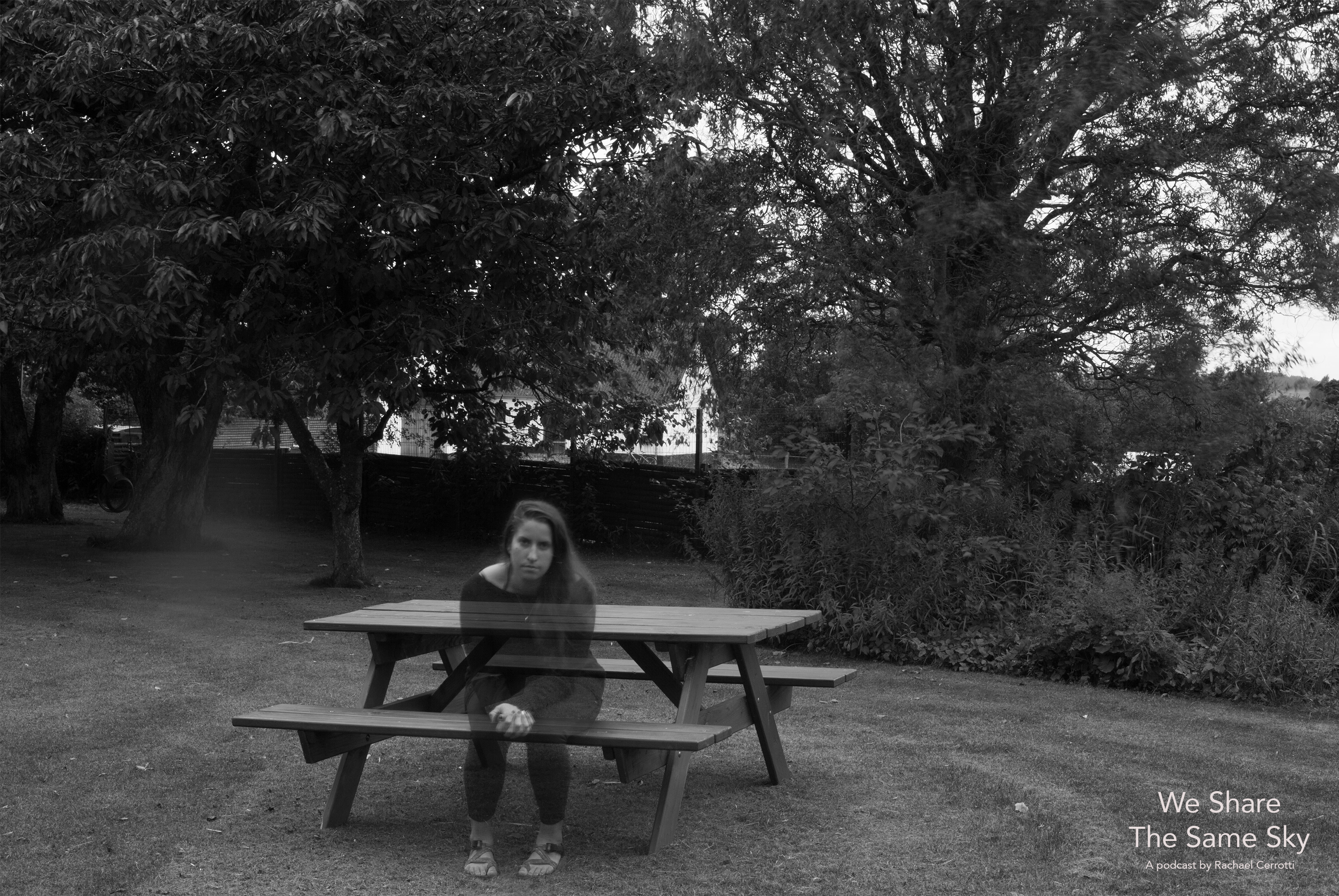 A self-portrait of Rachael while she is living on a Danish farm that is owned by the granddaughter of Hana’s foster mother from World War II. Photo by Rachael Cerrotti, 2017
A self-portrait of Rachael while she is living on a Danish farm that is owned by the granddaughter of Hana’s foster mother from World War II. Photo by Rachael Cerrotti, 2017
In order to enhance its classroom use, USC Shoah Foundation and Echoes & Reflections have created a Companion Educational Resource to support teachers as they introduce the podcast to their students. This document provides essential questions for students, as well as additional resources and content to help build context and framing for students’ understanding of the historical events addressed in the podcast.
Access to the podcast, as well as additional supporting materials—including IWitness student activities, academic standards alignment, and general strategies for teaching with podcasts—can all be found at the We Share The Same Sky page in IWitness.
Note: Due to the subject nature, the podcast is appropriate for older students, grades 10-12. As always, teachers should review the content fully in advance to determine its appropriateness for their student population.

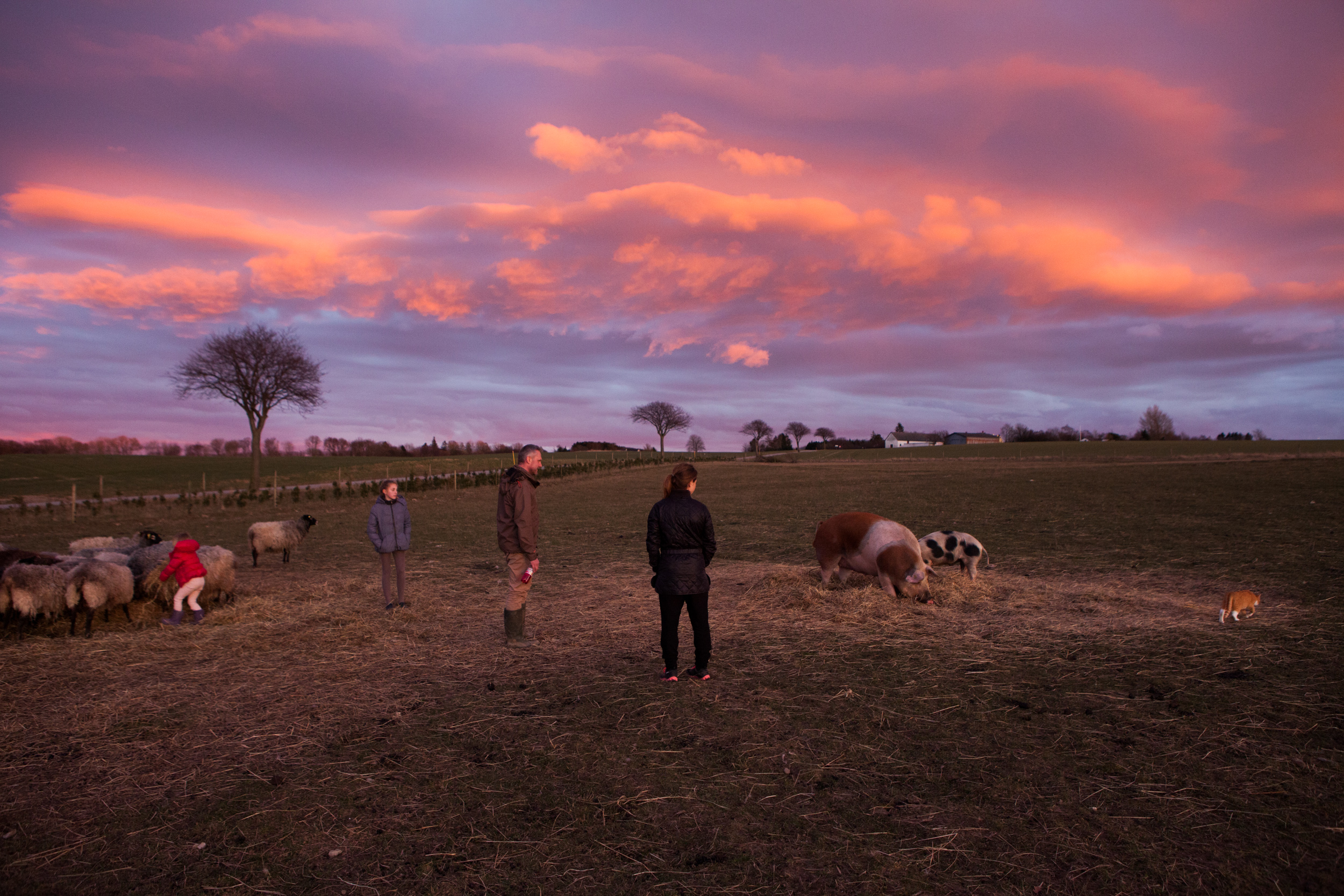 After many years of research and digitizing the archive her grandmother left behind, Rachael set out to retrace her grandmother’s 17 years of statelessness. Her intention was to travel via the same modes of transportation and to live similar style lives as to what her grandmother did during the war and in the years after. That meant that when she got to Denmark, she moved to a farm. Rachael moved in with the granddaughter of her grandmother’s foster mother from World War II and traded her labor for room and board as Hana once did. This picture is from that first visit in the winter of 2015. Since this time, Rachael has spent many more months living on this farm. It is owned by Sine Christiansen and her family. Sine is the granddaughter of Jensine, one Hana’s foster mother from World War II. Photo by Rachael Cerrotti, 2015
After many years of research and digitizing the archive her grandmother left behind, Rachael set out to retrace her grandmother’s 17 years of statelessness. Her intention was to travel via the same modes of transportation and to live similar style lives as to what her grandmother did during the war and in the years after. That meant that when she got to Denmark, she moved to a farm. Rachael moved in with the granddaughter of her grandmother’s foster mother from World War II and traded her labor for room and board as Hana once did. This picture is from that first visit in the winter of 2015. Since this time, Rachael has spent many more months living on this farm. It is owned by Sine Christiansen and her family. Sine is the granddaughter of Jensine, one Hana’s foster mother from World War II. Photo by Rachael Cerrotti, 2015
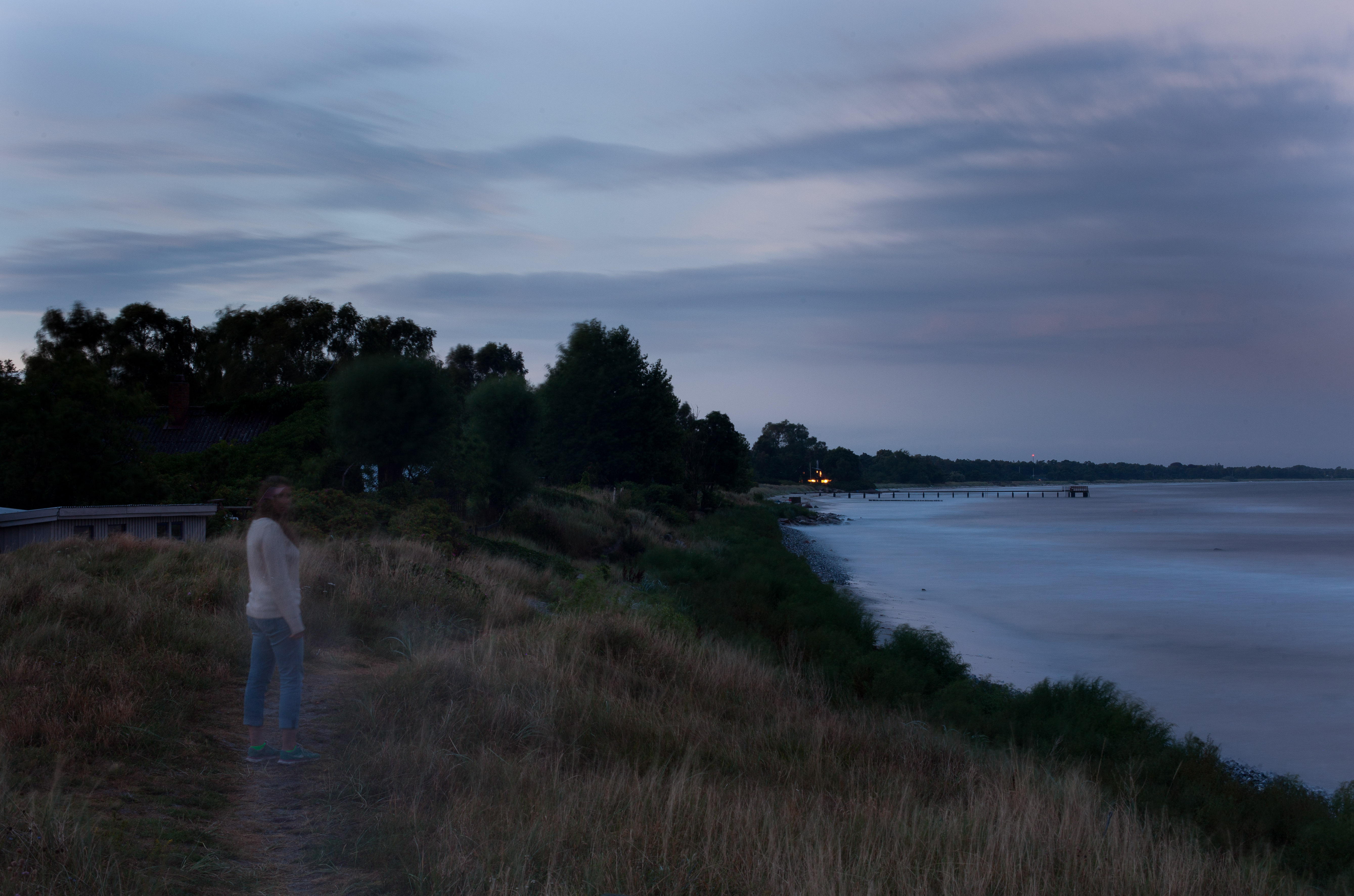 A self portrait of Rachael overlooking the exact spot in Southern Sweden where her grandmother’s refugee boat came to shore in 1943. Photo by Rachael Cerrotti, 2016
A self portrait of Rachael overlooking the exact spot in Southern Sweden where her grandmother’s refugee boat came to shore in 1943. Photo by Rachael Cerrotti, 2016


![]() ESTIMATED COMPLETION TIME
ESTIMATED COMPLETION TIME90 minutes
LESSON 3: Displaced Persons’ Camps After the Holocaust
Introduction 
Through texts and visual testimony, students investigate how postwar antisemitism, barriers to repatriation, and difficult conditions in DP camps rendered many Jewish people “liberated but not free.” Students also analyze testimony and images from DP camps to understand the choices Jewish people made to rebuild their lives despite all they had suffered and lost.
Post the supporting question above for students as you begin this part of the lesson.
| 1 | The phrase, “liberated but not free” is posted. In pairs, students discuss the meaning of this phrase as it relates to Jewish survivors of the Holocaust. They create a concept map or simple list of ways in which they think survivors were not truly free in the aftermath of liberation. Pairs share their ideas with the class.
|
| 2 | Students consider that one obstacle to freedom following liberation was the continuation of widespread antisemitism. They view the testimonies of individuals who discuss the 1946 Kielce Pogrom, which resulted in the murder of 42 Jews in Poland: [L]Rachel Huber[/L] and [L]Malwina Moses[/L]. As they watch the clips, students take notes on the Testimony Reflections handout. 
|
| 3 | After viewing the testimony clips, students journal and/or participate in a whole group discussion in response to some of the following questions:
|
What is a pogrom? Why were Jewish people targeted by pogroms after World War II (as they had been before the war)?
Why was the Kielce Pogrom a “terrible shock” to Rachel Huber and the others with her on the wagon?
What was the reaction among many Poles to Jewish survivors who returned home?
|
Why did Malwina Moses’ family live in a big city after the war rather than their hometown?
What feelings do Rachel and Malwina express about facing violence in their birth countries after surviving the Holocaust?
Did Jewish people have a home to return to after the war? Explain.
|
Post the supporting question above for students as you begin this part of the lesson.
| 4 | In pairs or small groups, students read the Displaced Persons handout and answer the accompanying questions. They review their responses as a whole group. The class discusses how factors including postwar antisemitism, barriers to immigration and repatriation, and difficult conditions in DP camps contributed to the feeling of “liberated but not free” for many Jewish survivors.
|
 STUDENT HANDOUTDisplaced Persons View More »
STUDENT HANDOUTDisplaced Persons View More »
 IWITNESS ACTIVITYUnderstanding Displaced Persons' Campshere »
IWITNESS ACTIVITYUnderstanding Displaced Persons' Campshere »
| 5 | Students view testimony of Jewish survivors who experienced displaced persons’ camps: [L]Malka Baran[/L] and [L]Daniel Geslewitz[/L]. As they watch the clips, students take notes on the Testimony Reflections handout, focusing especially on actions and feelings that demonstrate a “return to life” despite the hardships of the DP camps. 
|
| 6 | After viewing the testimony clips, students journal and/or participate in a whole group discussion in response to some of the following questions:
|
What does Malka Baran say “brought her back” and returned her to “normal life”?
What stood out to you about Malka’s work with children? What feeling did you get hearing her description?
Why do you think so many weddings took place and new families formed in such difficult conditions?
|
Daniel Geslewitz says, “We felt like human beings again” and Malka says, “It was a wonderful period.” What do you think most contributed to this “return to life”?
How was the atmosphere in the DP camps, as described by Malka and Daniel, different from what you had imagined?
|
| 7 | The Displaced Persons’ Camp Images are placed at different stations or displayed in different parts of the room. A sheet of chart paper with the questions below is positioned next to each. In small groups, students rotate and observe at least four images. They add their ideas to the corresponding charts. 
| What part of life does the image reflect (e.g. culture, community,education, family, leisure, etc.) |
How does the image reflect a “return to life”? What details do you notice? |
What questions do you have after viewing the image? |
| |
|
|
|
 NOTEView More »
NOTEView More »
 STUDENT HANDOUTDisplaced Persons' Camp Images View More »
STUDENT HANDOUTDisplaced Persons' Camp Images View More »
| 8 | Students take a “gallery walk” and review the image reflections noted by their peers. The class then gathers and the handout DP Camp Images – Explanation is either distributed or projected. Students review the handout and discuss the questions below, as well as their general insights in response to the activity.
-
How do the images demonstrate a “return to life”?
-
What choices did survivors make to rebuild their lives?
|
 STUDENT HANDOUTDP Camp Images – Explanation View More »
STUDENT HANDOUTDP Camp Images – Explanation View More »
| 9 | As a summative task, students choose one of the characteristics from the list below and identify a person or image from the lesson that most reflects the characteristic. On an index card, students describe their reasoning, using evidence from lesson sources. In pairs, students share their reflections. As time allows, students form new pairs and continue sharing. The index cards can be collected to check for understanding of lesson concepts.
- Resilience – ability to recover from difficulties
-
Renewal – beginning again, repairing something that is broken
-
Determination – focused or purposeful in getting something done
-
Hope – positive feeling that a desire will be fulfilled
|
MAKING CONNECTIONS

The ideas below are offered as ways to extend the lessons in this unit and make connections to related historical events, current issues, and students’ own experiences. These topics can be integrated directly into Echoes & Reflections lessons, used as stand-alone teaching ideas, or investigated by students engaged in project-based learning.
View More +
| 1 | Visit IWitness (iwitness.usc.edu) for testimonies, resources, and activities to help students learn more about survivors and liberators during the Holocaust.
|
| 2 | After visiting the liberated concentration camp in Ohrdruf, Germany, General Dwight D. Eisenhower dispatched a letter to Washington, D.C. urging journalists to witness the atrocities for themselves. CBS reporter Edward R. Murrow visited Buchenwald concentration camp in April 1945 and was among the first to provide a firsthand account. Watch a clip of Murrow’s broadcast or read an excerpt of his testimony. Then respond to Murrow’s concluding comments (below) in a small group discussion or journal entry.
“I pray you to believe what I have said about Buchenwald. I have reported what I saw and heard, but only part of it. For most of it I have no words…If I have offended you by this rather mild account of Buchenwald, I am not in the least sorry.”
|
| 3 | Postwar antisemitism in Europe was a barrier to Jewish people wishing to return to their home countries and rebuild their lives. Jewish people in the United States faced antisemitism during this period as well. Read or watch one of the works below and write an essay in which you describe how antisemitism was exhibited in the story, how it impacted the protagonists, and what the story helped you to understand about postwar antisemitism in the U.S.
-
Focus by Arthur Miller: In this 1945 novel, a Brooklyn man’s eyes are opened to the problem of antisemitism when he gets a pair of glasses that causes others to perceive him as Jewish. (There is also a 2001 film version.)
- Gentleman’s Agreement by Laura Z. Hobson: This 1947 novel and film follows a journalist who poses as a Jew to research the widespread distrust and dislike of Jews in New York City and nearby communities.
|
| 4 | The United Nations High Commissioner for Refugees (UNHCR) provides protection and life-saving assistance to millions of people worldwide who have been forced to flee their homes due to war and persecution. When possible, UNHCR helps refugees and other displaced people return to their homes. Research the UNHCR and share your findings in a presentation format of your choice (oral, written, multimedia). Answer the following questions in your presentation:
- When and why was the UNHCR created?
- On what continents has UNHCR worked over the years?
- What does UNHCR do to assist refugees and internally displaced persons?
- What challenges does the UNHCR face as it works?
- In what countries is the UNHCR currently operating and why?
- Identify one country where the UNHCR is currently operating. Explain the situation and how UNHCR is assisting.
|
Close -
 ESTIMATED COMPLETION TIME
ESTIMATED COMPLETION TIME135 minutes
LESSON 2: Holocaust Survivors Return to Life
Introduction 
In this lesson, students examine testimony, artifacts, and letters in order to understand the extreme physical and emotional challenges survivors struggled with after liberation. They also analyze works of poetry and art in order to appreciate the will of the Jewish people to live and their gradual “return to life.”
Post the supporting question above for students as you begin this part of the lesson.
| 1 | As a class, students explore the sources below highlighting the dire physical condition of survivors. They discuss the basic health needs of survivors in the immediate aftermath of liberation:
- Video testimony of [L]Charlotte Chaney[/L], a 23-year-old American nurse assigned to the Dachau concentration camp in Germany shortly after its liberation in April 1945
-
Written testimony of Haim Kuznitsky after Liberation (see handout), who reflects on his weakened physical state after surviving a death march and being liberated near the Neustadt-Glewe concentration camp in Germany
|
| 2 | Students form small groups and learn that they will examine an artifact that was meaningful to a survivor like Haim Kuznitsky during the period of liberation. The Artifact Analysis handout is distributed and the instructions are reviewed. The Artifacts Related to Liberation handout is then distributed and students immediately fold it back so they can only see the images and not the text. Groups choose one artifact to observe and complete the See-Think-Wonder analysis, followed by a group discussion. The class gathers to discuss their reactions and insights.
|
| 3 | In pairs, students consider the following question: In addition to the physical challenges faced by survivors after liberation, what spiritual or emotional challenges do you think they experienced? As a class, students share their thoughts and reflect on the ways in which spiritual wounds were as devastating as physical ones
|
| 4 | Students remain in their pairs and are assigned one or more excerpts to read from the handout First Letters After Liberation. Students annotate the letters by highlighting and recording margin notes on the emotional challenges faced by each survivor. As a class, students discuss their insights and reflect on the overwhelming hardships survivors had to cope with as they faced their future lives.
|
 STUDENT HANDOUTFirst Letters After Liberation View More »
STUDENT HANDOUTFirst Letters After Liberation View More »
Post the supporting question above for students as you begin this part of the lesson.
| 5 | The handout Survivors’ Return to Life is distributed and students read the introduction together. Students take notes on the handout as they view the testimonies of survivors who reflect on their experiences immediately after liberation: [L]Anton Mason[/L], [L]Gerda Klein[/L], and [L]David Abrams[/L].
|
| 6 | After viewing the testimony clips, students journal and/or participate in a whole group discussion in response to some of the following questions:
|
What do the survivors’ expressions, tone, and body language reveal about how they felt upon liberation? How did their stories make you feel?
What signs of “return to life” most stood out to you? What factors helped survivors to choose life?
How did the liberators help to “restore humanity” (in Gerda Klein’s words) in the survivors?
Why did David Abrams refuse to ride in the “welcome wagon” back to his town? How does his choice demonstrate a “return to life”?
|
What was your reaction to Gerda’s liberator revealing that he was also Jewish? What feelings might each of them have experienced in that moment?
How do you interpret Anton Mason’s assertion, “We felt that as long as one is alive, they lost”?
Gerda says she couldn’t “absorb the wonder of freedom” and Anton comments, “We are free, but how will we live without our families?” What helped them begin to feel free again after so many hardships?
|
| 7 | Students continue to reflect on the idea of “return to life” by analyzing one of the works of art below. Individually, they choose one piece to think about and engage in a brief written reflection on how the piece symbolizes survivors’ “return to life.” Students then form pairs in which one has focused on the poem and the other on the painting. They share a summary of each work’s meaning and their interpretation of how it relates to “return to life.” As a class, students discuss the artists’ hope and decision to choose life as they coped with the horrors of the Holocaust.
-
Poem: “My Life Started from the End” by Halina Birenbaum
-
Painting: Children Alone by Samuel Bak
|
| 8 | As a summative task, students respond to the final passage from Night by Elie Wiesel. Drawing upon lesson sources, they consider and identify several ways in which that “corpse” might have been able to feel human again, to envision a “return to life.”
“Three days after the liberation of Buchenwald, I became very ill… One day when I was able to get up, I decided to look at myself in the mirror on the opposite wall. I had not seen myself since the ghetto. From the depths of the mirror, a corpse was contemplating me. The look in his eyes as he gazed at me has never left me.”
|
 ESTIMATED COMPLETION TIME
ESTIMATED COMPLETION TIME90 minutes
LESSON 3: Displaced Persons’ Camps After the Holocaust
Introduction 
Through texts and visual testimony, students investigate how postwar antisemitism, barriers to repatriation, and difficult conditions in DP camps rendered many Jewish people “liberated but not free.” Students also analyze testimony and images from DP camps to understand the choices Jewish people made to rebuild their lives despite all they had suffered and lost.
Post the supporting question above for students as you begin this part of the lesson.
| 1 | The phrase, “liberated but not free” is posted. In pairs, students discuss the meaning of this phrase as it relates to Jewish survivors of the Holocaust. They create a concept map or simple list of ways in which they think survivors were not truly free in the aftermath of liberation. Pairs share their ideas with the class.
|
| 2 | Students consider that one obstacle to freedom following liberation was the continuation of widespread antisemitism. They view the testimonies of individuals who discuss the 1946 Kielce Pogrom, which resulted in the murder of 42 Jews in Poland: [L]Rachel Huber[/L] and [L]Malwina Moses[/L]. As they watch the clips, students take notes on the Testimony Reflections handout. 
|
| 3 | After viewing the testimony clips, students journal and/or participate in a whole group discussion in response to some of the following questions:
|
What is a pogrom? Why were Jewish people targeted by pogroms after World War II (as they had been before the war)?
Why was the Kielce Pogrom a “terrible shock” to Rachel Huber and the others with her on the wagon?
What was the reaction among many Poles to Jewish survivors who returned home?
|
Why did Malwina Moses’ family live in a big city after the war rather than their hometown?
What feelings do Rachel and Malwina express about facing violence in their birth countries after surviving the Holocaust?
Did Jewish people have a home to return to after the war? Explain.
|
Post the supporting question above for students as you begin this part of the lesson.
| 4 | In pairs or small groups, students read the Displaced Persons handout and answer the accompanying questions. They review their responses as a whole group. The class discusses how factors including postwar antisemitism, barriers to immigration and repatriation, and difficult conditions in DP camps contributed to the feeling of “liberated but not free” for many Jewish survivors.
|
 STUDENT HANDOUTDisplaced Persons View More »
STUDENT HANDOUTDisplaced Persons View More »
 IWITNESS ACTIVITYUnderstanding Displaced Persons' Campshere »
IWITNESS ACTIVITYUnderstanding Displaced Persons' Campshere »
| 5 | Students view testimony of Jewish survivors who experienced displaced persons’ camps: [L]Malka Baran[/L] and [L]Daniel Geslewitz[/L]. As they watch the clips, students take notes on the Testimony Reflections handout, focusing especially on actions and feelings that demonstrate a “return to life” despite the hardships of the DP camps. 
|
| 6 | After viewing the testimony clips, students journal and/or participate in a whole group discussion in response to some of the following questions:
|
What does Malka Baran say “brought her back” and returned her to “normal life”?
What stood out to you about Malka’s work with children? What feeling did you get hearing her description?
Why do you think so many weddings took place and new families formed in such difficult conditions?
|
Daniel Geslewitz says, “We felt like human beings again” and Malka says, “It was a wonderful period.” What do you think most contributed to this “return to life”?
How was the atmosphere in the DP camps, as described by Malka and Daniel, different from what you had imagined?
|
| 7 | The Displaced Persons’ Camp Images are placed at different stations or displayed in different parts of the room. A sheet of chart paper with the questions below is positioned next to each. In small groups, students rotate and observe at least four images. They add their ideas to the corresponding charts. 
| What part of life does the image reflect (e.g. culture, community,education, family, leisure, etc.) |
How does the image reflect a “return to life”? What details do you notice? |
What questions do you have after viewing the image? |
| |
|
|
|
 NOTEView More »
NOTEView More »
 STUDENT HANDOUTDisplaced Persons' Camp Images View More »
STUDENT HANDOUTDisplaced Persons' Camp Images View More »
| 8 | Students take a “gallery walk” and review the image reflections noted by their peers. The class then gathers and the handout DP Camp Images – Explanation is either distributed or projected. Students review the handout and discuss the questions below, as well as their general insights in response to the activity.
-
How do the images demonstrate a “return to life”?
-
What choices did survivors make to rebuild their lives?
|
 STUDENT HANDOUTDP Camp Images – Explanation View More »
STUDENT HANDOUTDP Camp Images – Explanation View More »
| 9 | As a summative task, students choose one of the characteristics from the list below and identify a person or image from the lesson that most reflects the characteristic. On an index card, students describe their reasoning, using evidence from lesson sources. In pairs, students share their reflections. As time allows, students form new pairs and continue sharing. The index cards can be collected to check for understanding of lesson concepts.
- Resilience – ability to recover from difficulties
-
Renewal – beginning again, repairing something that is broken
-
Determination – focused or purposeful in getting something done
-
Hope – positive feeling that a desire will be fulfilled
|
MAKING CONNECTIONS

The ideas below are offered as ways to extend the lessons in this unit and make connections to related historical events, current issues, and students’ own experiences. These topics can be integrated directly into Echoes & Reflections lessons, used as stand-alone teaching ideas, or investigated by students engaged in project-based learning.
View More +
| 1 | Visit IWitness (iwitness.usc.edu) for testimonies, resources, and activities to help students learn more about survivors and liberators during the Holocaust.
|
| 2 | After visiting the liberated concentration camp in Ohrdruf, Germany, General Dwight D. Eisenhower dispatched a letter to Washington, D.C. urging journalists to witness the atrocities for themselves. CBS reporter Edward R. Murrow visited Buchenwald concentration camp in April 1945 and was among the first to provide a firsthand account. Watch a clip of Murrow’s broadcast or read an excerpt of his testimony. Then respond to Murrow’s concluding comments (below) in a small group discussion or journal entry.
“I pray you to believe what I have said about Buchenwald. I have reported what I saw and heard, but only part of it. For most of it I have no words…If I have offended you by this rather mild account of Buchenwald, I am not in the least sorry.”
|
| 3 | Postwar antisemitism in Europe was a barrier to Jewish people wishing to return to their home countries and rebuild their lives. Jewish people in the United States faced antisemitism during this period as well. Read or watch one of the works below and write an essay in which you describe how antisemitism was exhibited in the story, how it impacted the protagonists, and what the story helped you to understand about postwar antisemitism in the U.S.
-
Focus by Arthur Miller: In this 1945 novel, a Brooklyn man’s eyes are opened to the problem of antisemitism when he gets a pair of glasses that causes others to perceive him as Jewish. (There is also a 2001 film version.)
- Gentleman’s Agreement by Laura Z. Hobson: This 1947 novel and film follows a journalist who poses as a Jew to research the widespread distrust and dislike of Jews in New York City and nearby communities.
|
| 4 | The United Nations High Commissioner for Refugees (UNHCR) provides protection and life-saving assistance to millions of people worldwide who have been forced to flee their homes due to war and persecution. When possible, UNHCR helps refugees and other displaced people return to their homes. Research the UNHCR and share your findings in a presentation format of your choice (oral, written, multimedia). Answer the following questions in your presentation:
- When and why was the UNHCR created?
- On what continents has UNHCR worked over the years?
- What does UNHCR do to assist refugees and internally displaced persons?
- What challenges does the UNHCR face as it works?
- In what countries is the UNHCR currently operating and why?
- Identify one country where the UNHCR is currently operating. Explain the situation and how UNHCR is assisting.
|






 direct teachers to the piece of content named in the procedures
direct teachers to the piece of content named in the procedures are available as PDFs for download
are available as PDFs for download








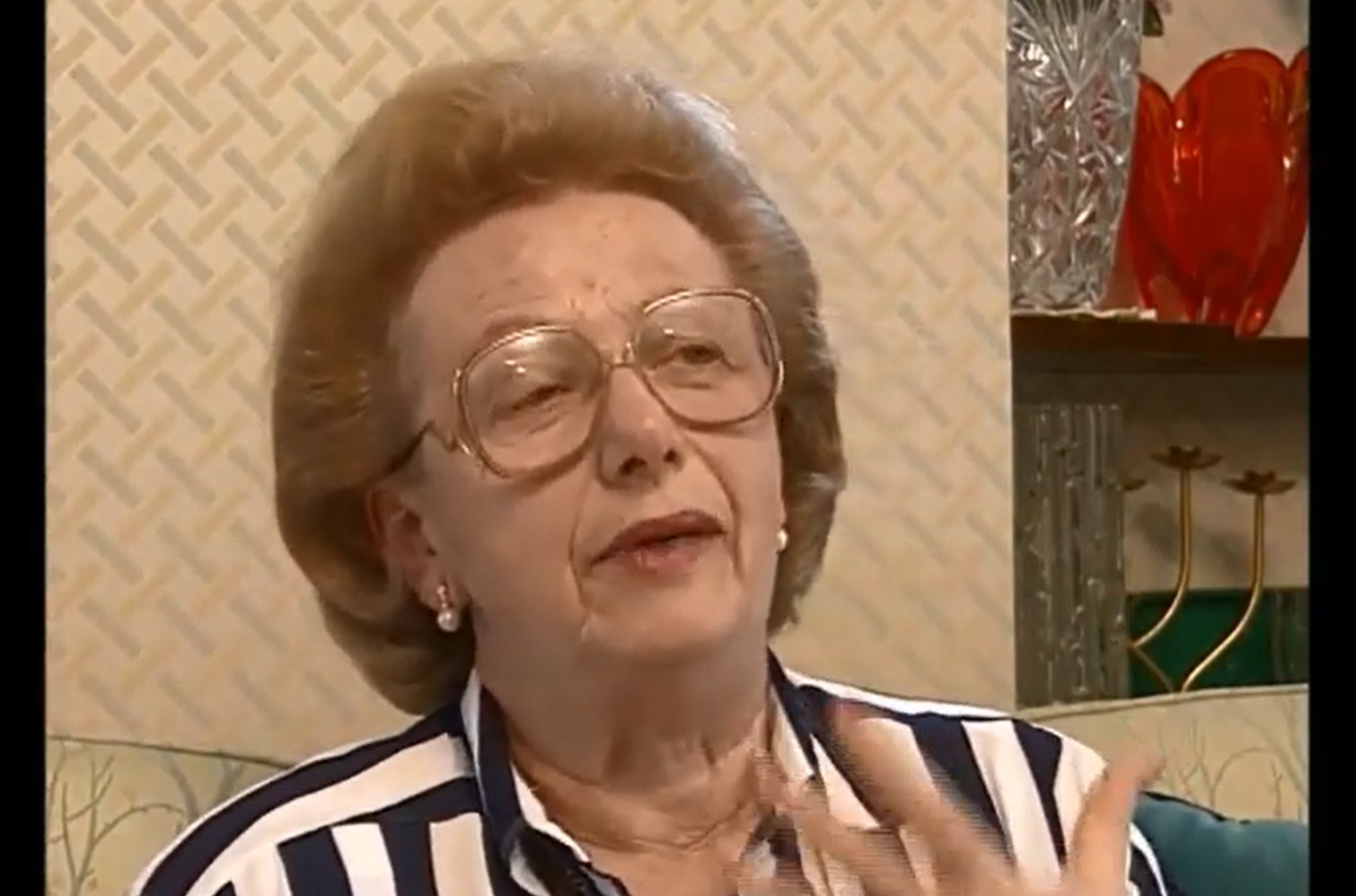
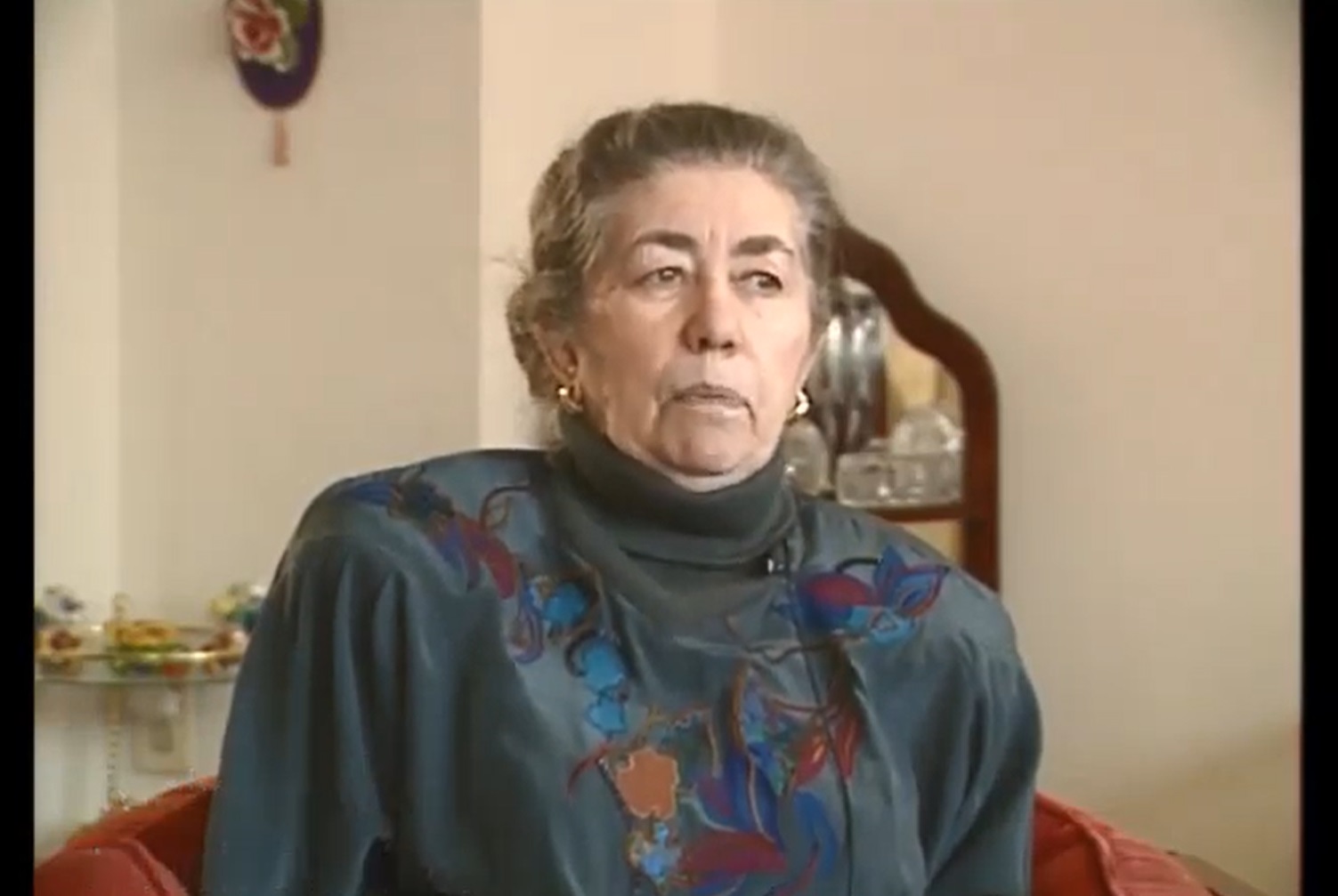
 IWITNESS ACTIVITY
IWITNESS ACTIVITY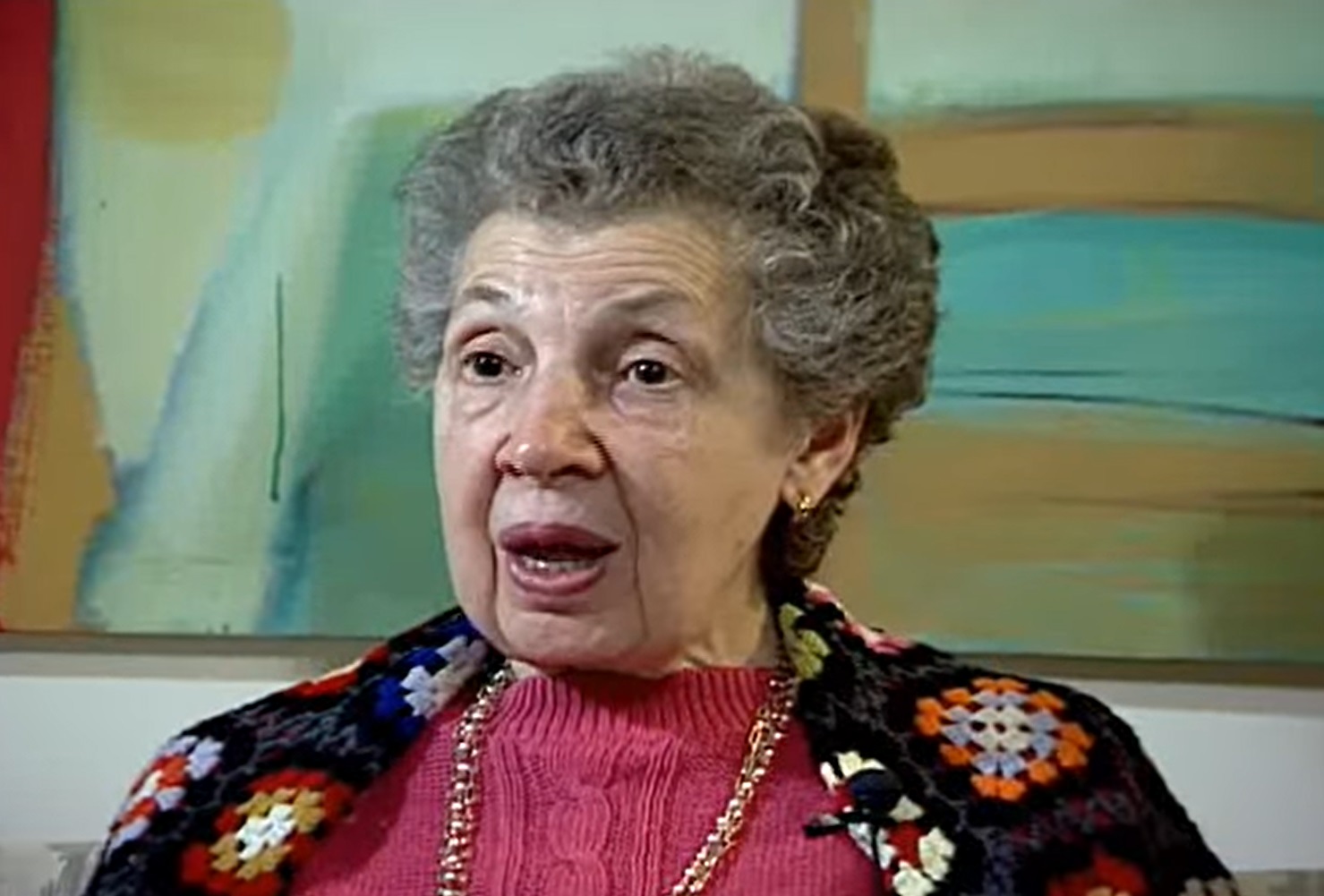



 IWITNESS ACTIVITY
IWITNESS ACTIVITY






